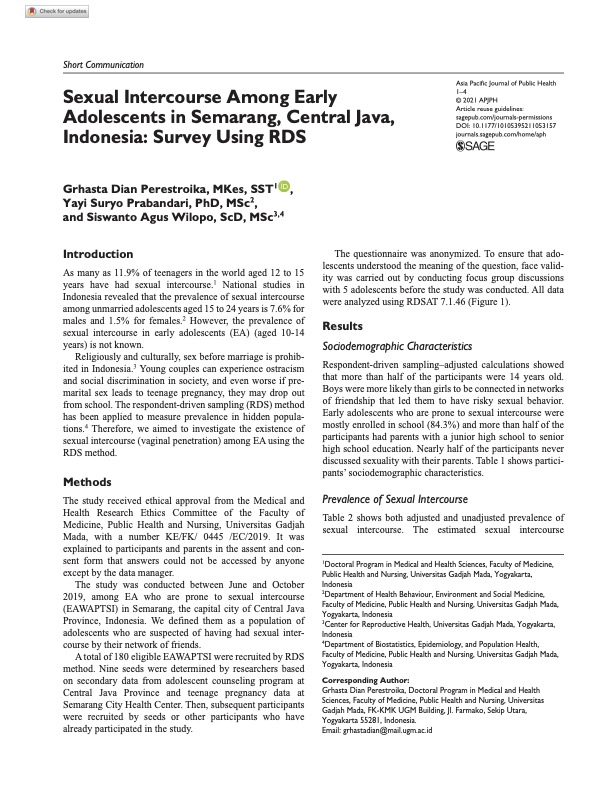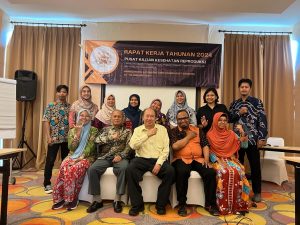
Shoshanna L. Fine, Robert W. Blum, Judith K. Bass, Aimée M. Lulebo, Anggriyani W. Pinandari, William Stones, Siswanto A. Wilopo, Xiayun Zuo and Rashelle J. Musci
A Latent Class Approach to Understanding Patterns of Emotional and Behavioral Problems among Early Adolescents Across Four Low- and Middle-Income Countries
- Laporan
Early adolescents (ages 10–14) living in low- and middle-income countries have heightened vulnerability to psychosocial risks, but available evidence from these settings is limited. This study used data from the Global Early Adolescent Study to characterize prototypical patterns of emotional and behavioral problems among 10,437 early adolescents (51% female) living in the Democratic Republic of Congo (DRC), Malawi, Indonesia, and China, and explore the extent to which these patterns varied by country and sex. LCA was used to identify and classify patterns of emotional and behavioral problems separately by country. Within each country, measurement invariance by sex was evaluated. LCA sup- ported a four-class solution in DRC, Malawi, and Indonesia, and a three-class solution in China. Across countries, early adolescents fell into the following subgroups: Well-Adjusted (40–62%), Emotional Problems (14–29%), Behavioral Problems (15–22%; not present in China), and Maladjusted (4–15%). Despite the consistency of these patterns, there were notable contextual differences. Further, tests of measurement invariance indicated that the prevalence and nature of these classes differed by sex. Findings can be used to support the tailoring of inter- ventions targeting psychosocial adjustment, and suggest that such programs may have utility across diverse cross-national settings.



